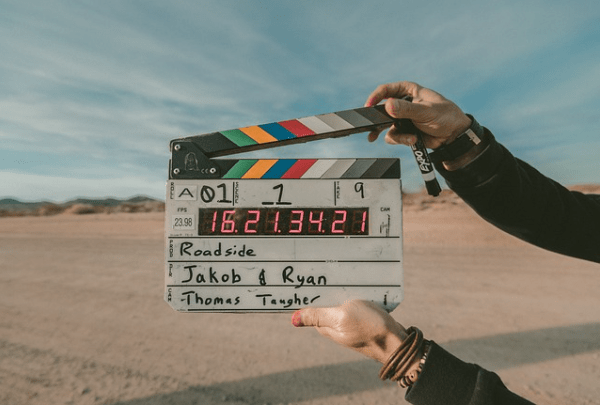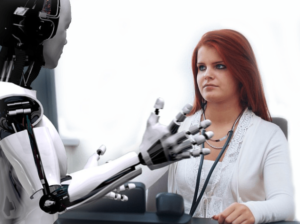The media and entertainment industry is constantly changing, and despite AI being a reasonably recent mainstream phenomenon, we can already see the impact it’s been able to have, revolutionising how the industry operates. From creating new content to strategising new ideas to increase audience engagement, it’s become irrefutable how powerful AI is and how it will continue to change how we view, use, and benefit from media and entertainment now and in the future. In this article, we’ll explore the various ways the power of AI has been used to transform media and entertainment, looking at everything from content creation to tailored personalisations and audience engagement and interaction.
Content Creation and Enhancement
As you might have seen recently, many AI tools have appeared, offering the chance to produce content with little human involvement. In the past, generating traditional media content took considerable human labour and time. However, the process has become more streamlined and efficient with the release of AI tools. AI tools can now produce text,
images, and even videos, and this can save creators vast amounts of time that can be better used for working on other areas of content creation, such as optimisation and long-term planning.
When looking at text-based content, AI tools can generate articles, blog posts, and news reports based on predefined parameters and data inputs. This technology is known as natural language generation (NLG), and it can quickly create understandable content, which is very useful for those covering real-time stories and generating reports at short notice. AI-powered image and video generation tools are also gaining ground, especially over the past year or so. These content generation tools can produce visuals, such as images and videos, based on basic text descriptions or even existing ideas. So whether you want to create engaging visuals for online slots in the UK or need content for your marketing campaign, AI should be able to help.
Content Recommendations
The creation and release of AI have changed how users can digest content, especially with personalised content tailored to what they’re most likely to interact with. Many of the more prominent streaming platforms have used AI algorithms and machine learning to quickly analyse users’ viewing history to make recommendations that are likely to align with what the user is expected to be interested in, aiding the user experience. As a result, we have seen that many users can discover shows they would have otherwise never encountered, particularly content created abroad and broadcast in a foreign language.
However, the ability for AI to personalise the viewing experience extends beyond content recommendations. AI-powered systems can dynamically adjust the content based on user behaviour and preferences.
While we are yet to see this occur much in the real world, this could involve altering the narrative of a story in a video game, adapting the difficulty level of a game, or altering the ending of a TV show or movie to cater to individual preferences, based on engagement and viewing history. Using AI to drive a high degree of personalised content delivery will help enhance user engagement and make the content more immersive and enjoyable.
Audience Engagement and Interaction
AI has massively transformed audience engagement by allowing for significantly more interactive and immersive experiences. Chatbots and virtual assistants have become increasingly common on media and entertainment websites, ticket booking sites, and online banking.
These AI “customer service” agents can respond rapidly to user questions, helping users find the content they’re looking for and engaging in casual conversations to find
resolutions to problems. This cuts costs and helps smaller businesses scale their operations, especially for companies which would have needed more money to afford a live customer service team otherwise.
Some AI-related tools and devices can be used to increase user engagement. Alternate reality works by imposing digital elements onto the real world, creating interactive experiences that bridge the gap between the physical and digital realms — PokemonGo is an example of this working in the real world. On the other hand, virtual reality transports users to entirely different virtual environments, allowing them to experience content as if they were physically present within it.
The ongoing digital transformation in the media and entertainment industry is a long and complex process, currently driven through AI, which instantly and repeatedly alters content creation, distribution, and consumption on many different levels.
The rolling out of AI has allowed for the automation of content creation, as well as personalised and recommended content that can be tailored to the wants and needs of the user, resulting in increased user engagement across the board. And while the changes could hugely impact how we consume and interact with content moving forward, these AI-centric tools are accompanied by pushback relating to authenticity and privacy, which must be addressed.
Help keep news FREE for our readers
Supporting your local community newspaper/online news outlet is crucial now more than ever. If you believe in independent journalism, then consider making a valuable contribution by making a one-time or monthly donation. We operate in rural areas where providing unbiased news can be challenging. Read More About Supporting The West Wales Chronicle


























